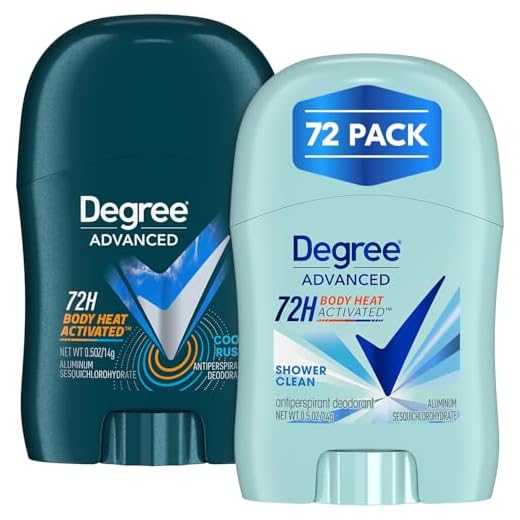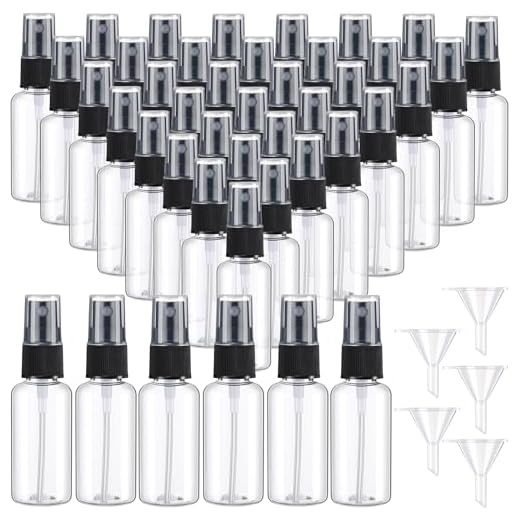





Transporting aerosol containers in baggage is prohibited in many airline regulations. Always check the specific guidelines of the airline prior to travel, as each carrier can have its own rules regarding these items.
Most airlines allow non-flammable personal care products such as deodorants and hair sprays, provided they meet size restrictions. Typically, aerosol containers are limited to 100 milliliters or 3.4 ounces if they are being taken on board. Make sure to place these items in a transparent, resealable bag for security screening.
For larger containers or those that exceed the size limit, consider shipping them separately or looking for alternatives that comply with safety regulations. It’s advisable to inform airline staff about any hazardous materials during check-in.
Can You Pack Spray Cans in Checked Luggage?
Always check airline regulations before including pressurized containers in your suitcase. Many airlines prohibit items like aerosol bottles due to safety concerns related to flammability and pressure. Examine your specific carrier’s policies to confirm.
Generally, items classified as hazardous materials are banned in the cargo hold. If you need to transport hair sprays, deodorants, or similar products, consider alternatives. Travel-sized, non-aerosol substitutes may be allowed, minimizing risks.
If necessary, declare any relevant items at check-in. Abide by local laws regarding the transport of such goods, especially for international flights, as regulations differ by country. Review Transportation Security Administration (TSA) guidelines if flying within the U.S.
For air travel, remember that certain exemptions exist for toiletries, but quantities often remain limited. Consider purchasing these products at your destination to avoid complications during travel.
Understanding Airline Policies on Aerosol Cans
Airlines impose specific restrictions on the transport of aerosol products due to safety regulations. Generally, items containing flammable contents are prohibited in hold baggage, while some products might be allowed under certain conditions.
Most airlines permit non-flammable aerosols in the cargo compartment, provided they are within volume limits, typically around 0.5 kilograms or 18 ounces per item. Verify with the specific carrier for precise measurements and weight limits, as these may differ.
Packaging is essential. Ensure that caps are securely fastened to prevent leakage. Consider using sealed plastic bags to contain any potential spills or damage during transit.
Check regulations concerning commercial items; many airlines prohibit sending products classified as hazardous materials. Essential items like deodorants or hair sprays may often be permitted if they meet the safety thresholds.
Inspect the airline’s official guidelines prior to travel for the most current information regarding what may or may not be taken on board. Awareness of these policies can prevent issues at security checkpoints.
Types of Aerosol Containers Permitted in Checked Baggage
Only certain categories of aerosol containers are allowed in the cargo hold of an aircraft. Before proceeding with your travel plans, ensure that the items comply with airline regulations.
Permissible Categories

Personal Care Products: Items such as deodorants, hair sprays, and shaving creams are usually accepted, provided they are under the size limit of 18 ounces (approximately 510 grams).
Household Items: Cleaning agents and insect repellents in aerosol form may also be allowed, subject to size restrictions. Make sure these substances are labeled appropriately and are not flammable.
Restrictions and Compliance
Remember, any item containing flammable materials or exceeding the maximum weight limit is typically prohibited. Always check the specific restrictions from your airline and local regulations to avoid inconveniences.
Regulations for Flammable and Non-Flammable Sprays

Flammable aerosol products are prohibited in the hold of an aircraft. These items typically include certain types of paints, adhesives, and deodorants containing flammable propellants. Always check the label for hazard symbols indicating flammability.
While non-flammable alternatives might be permitted, it’s essential to verify individual airline policies. Generally, items in this category may include certain types of personal care products and cleaning agents, provided they do not exceed specified volume limits.
This volume limit is often set at 100 ml per container, with a total maximum of 1 liter for all non-flammable items combined in your travel gear. Ensure to store these containers securely to prevent accidental discharge during transit.
For safer travel, reference the airline’s official guidelines regarding aerosol items prior to departure. Compliance with these rules helps prevent potential hazards and ensures a smoother journey through airport security.
How to Safely Transport Aerosol Containers
Secure each container by wrapping it in clothing or bubble wrap. This minimizes friction and reduces impact during transit.
Follow these guidelines for safe transport:
- Ensure each can is upright and tightly closed. Loose caps can lead to leakage.
- Store in the middle of your bag to avoid compression from other items.
- If traveling with personal care products, consider travel-sized versions to minimize risk.
Review airline regulations before travel. Some carriers have specific policies regarding size and quantity. Always check best luggage brands handbag for compliance to avoid issues at the airport.
For packing accessories, utilize soft-sided containers that can absorb shock. This practice protects against punctures. If carrying promotional items, use sturdy boxes to prevent damage.
In case of leaks, have a separate plastic bag on hand. This will contain any spilled materials. Familiarize yourself with airline rules on flammable and non-flammable substances to avoid fines or confiscation. For effective dietary management during travel, consult tips on the best adders for dog food.
Lastly, keep all essential items accessible and consider portability if selecting containers. It’s advisable to travel with durable, weather-resistant bags, especially when facing unpredictable conditions, like those requiring the best beach umbrellas wind conditions.
What to Do If Your Aerosol Container Is Denied at Check-In
Seek guidance from the airline staff immediately if your aerosol product is refused during check-in. Explain the situation clearly and inquire about alternative options, such as shipping the item separately via air cargo or ground services.
If available, produce documentation confirming that the item complies with safety regulations. Provide receipts or proof of purchase to highlight that the container is for personal use and not hazardous according to airline policies.
Explore local regulations and services at your destination. Determine whether the rejected item can be purchased upon arrival to avoid inconvenience. Inquire about storage facilities at the airport as a last resort to keep the article safely until your return.
Consider taking detailed photographs of the rejected item and any correspondence with airline staff. This documentation may be useful for future reference or if disputes arise regarding airline policies.
Lastly, staying informed about the specific guidelines and prohibitions related to aerosol items for different airlines can help prevent issues during your journey. Regularly reviewing these rules prior to travel can enhance your overall experience.
FAQ:
Can I bring spray cans in my checked luggage?
Yes, you can pack spray cans in checked luggage, but there are specific rules you must follow. Airlines typically allow certain types of spray cans, such as deodorants and hair sprays, as long as they do not exceed the volume limit (usually 16 ounces or 500 milliliters). Additionally, ensure that the cans are not classified as hazardous materials. Always check with your airline for their specific policies regarding spray cans.
What types of spray cans are not allowed in checked luggage?
Some spray cans are prohibited in checked luggage, particularly those that contain flammable or hazardous materials, such as certain types of paint, aerosol cleaning products, and some cooking sprays. The Transportation Security Administration (TSA) provides guidelines on what constitutes hazardous materials, so it’s crucial to review these before packing. Always err on the side of caution and verify with your airline if you are unsure about a specific item.
Are there any limitations on the number of spray cans I can pack?
There may be limitations on the number of spray cans you can pack in your checked luggage. While many airlines do not specify a maximum number, it’s wise to consider the overall weight and size of your luggage. Packing too many aerosol cans can lead to excess weight fees or complications during screening. Always check your airline’s policies and be prepared to answer questions from security personnel, as they may want to inspect your items more closely.
How should I pack spray cans in checked luggage to prevent damage?
To protect spray cans while traveling, make sure to pack them securely. Use bubble wrap or clothing to cushion the cans and place them in the center of your luggage, surrounded by soft items to absorb impact. Avoid placing heavy items on top of the spray cans to reduce the risk of them getting crushed. Additionally, ensure that the cans are closed tightly to prevent leaks. If possible, check for any airline-specific recommendations on packing such items.







